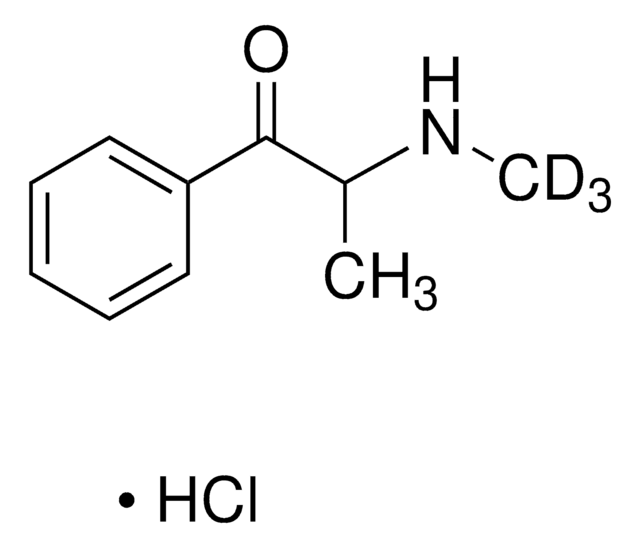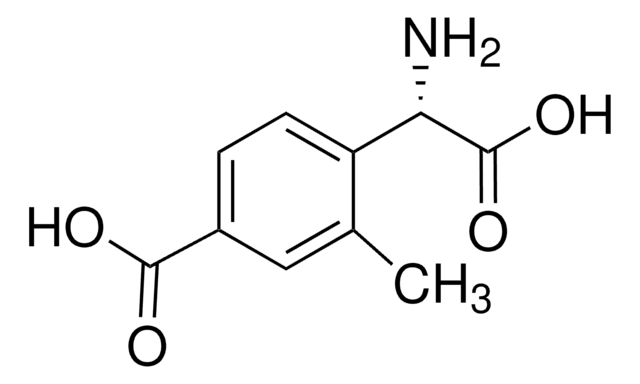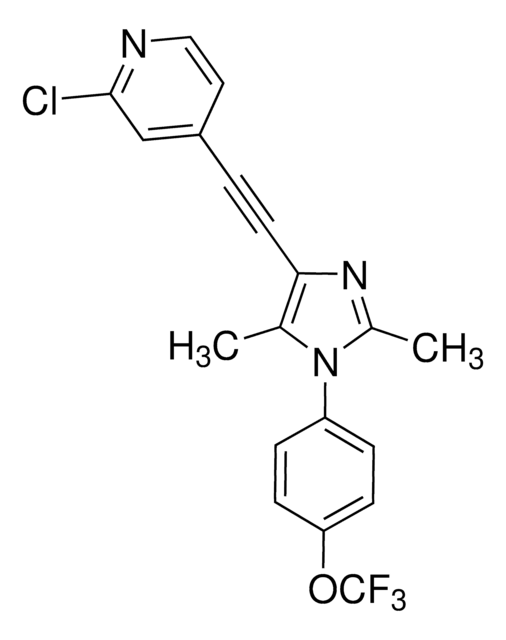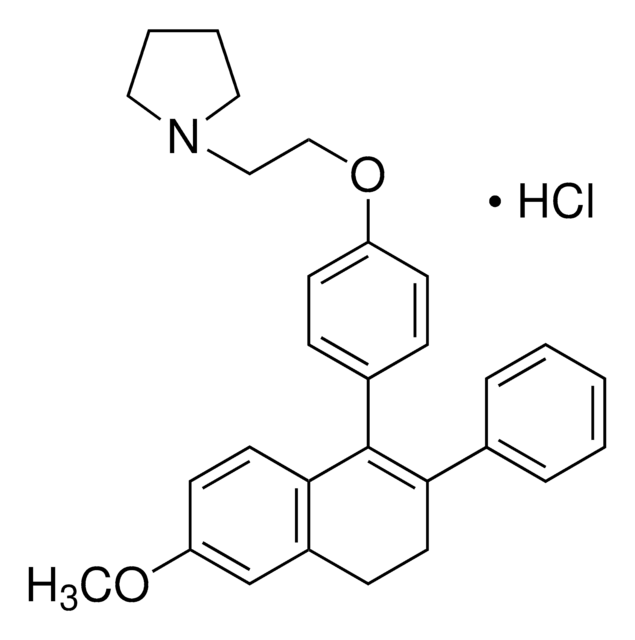M5435
6-Methyl-2-(phenylethynyl)pyridine hydrochloride
≥98% (HPLC)
Sinônimo(s):
MPEP hydrochloride
About This Item
Produtos recomendados
Ensaio
≥98% (HPLC)
Formulário
powder
cor
off-white to light tan
solubilidade
DMSO: 10 mg/mL, clear
temperatura de armazenamento
room temp
cadeia de caracteres SMILES
Cl.Cc1cccc(n1)C#Cc2ccccc2
InChI
1S/C14H11N.ClH/c1-12-6-5-9-14(15-12)11-10-13-7-3-2-4-8-13;/h2-9H,1H3;1H
chave InChI
PKDHDJBNEKXCBI-UHFFFAOYSA-N
Informações sobre genes
human ... GRIN2B(2904) , GRM5(2915)
rat ... Grm5(24418)
Categorias relacionadas
Descrição geral
Aplicação
Ações bioquímicas/fisiológicas
Características e benefícios
Código de classe de armazenamento
11 - Combustible Solids
Classe de risco de água (WGK)
WGK 3
Ponto de fulgor (°F)
Not applicable
Ponto de fulgor (°C)
Not applicable
Equipamento de proteção individual
Eyeshields, Gloves, type N95 (US)
Escolha uma das versões mais recentes:
Já possui este produto?
Encontre a documentação dos produtos que você adquiriu recentemente na biblioteca de documentos.
Conteúdo relacionado
DISCOVER Bioactive Small Molecules for Neuroscience
Nossa equipe de cientistas tem experiência em todas as áreas de pesquisa, incluindo Life Sciences, ciência de materiais, síntese química, cromatografia, química analítica e muitas outras.
Entre em contato com a assistência técnica








